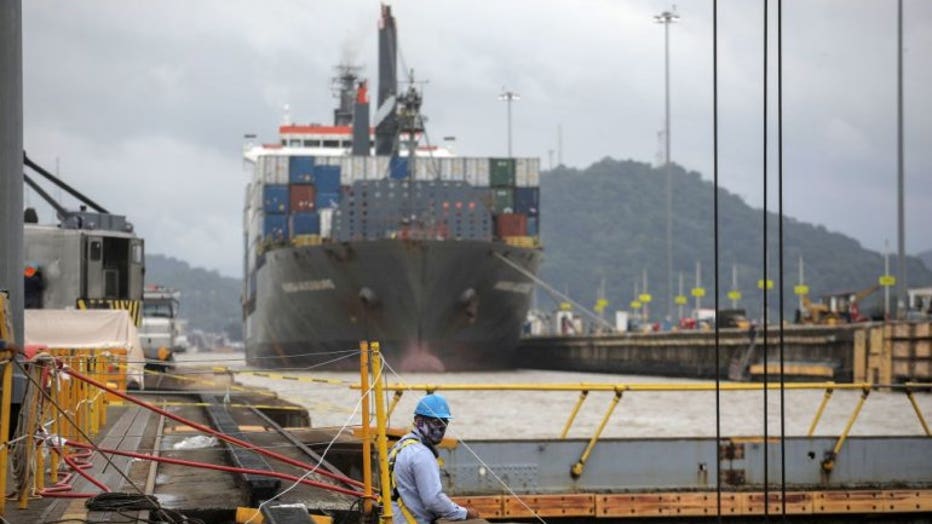Panama Canal marks 20 years of US handover amid water crisis
PANAMA CITY — Panama marked the 20-year anniversary Tuesday of the turnover of the Panama Canal, now amid a water crisis that threatens the viability of the waterway.
Declining rainfall and rising temperatures have reduced the level of freshwater lakes that fill the locks of the Panama Canal and allow boats to transit between the Pacific and the Atlantic.
While Panama has been successful at running — and expanding — the canal after the U.S. handed over control, it now must face a new challenge: to find a new source of water for the locks.
The anniversary of the Dec. 31, 1999, handover comes amid months of water-depth restrictions that limit what the cargo ships using the waterway can carry.

A worker takes part in the maintenance of the Panama Canal's miraflores locks in Panama City, on August 1, 2019. - In shifts of 12 hours, 350 workers in the morning and 250 in the afternoon, are in charge of the maintenance of the 105-years-old gates
Changes in climate — and a recent expansion to allow bigger ships to pass — may have finally caught up with the canal's 105-year-old design, in which the artificial Gatun Lake functions as part of the ship passage and also provides drinking water for about half the country.
“The rainfall over the canal watershed is just not enough to keep the expanded canal operating, much less any further expansion," said analyst and hydroelectric dam expert José Isabel Blandón. “Panama has to start looking at this problem because the lakes also provide drinking water for 2 million people."
It could affect the competitiveness of the canal, which for 85 years was run by the United States.
Ricaurte Vásquez, who heads the canal administration, said the coming dry season could prove a test.
“This poses a problem of operational sustainability,” Vásquez said. The Suez Canal, which is at sea level and doesn't need locks, he said, "doesn't have that problem, and it could become a much more attractive and reliable alternative."
All that doesn't mean that Panamanians aren't happy about the handover, and their anniversary.
President Laurentino Cortizo hoisted a giant Panamanian flag outside the canal headquarters Tuesday.
The handover, Cortizo said, “demolished a barrier that divided the country,” a reference to the fact the canal runs through the middle of Panama. “What our people achieved was union.”
The canal has also earned Panama about $17 billion in fees and passage payments. The country spent about $5.6 billion on an expansion that was completed in 2016.
Since then, the canal has had to deal with the effects of trade tensions between the United States and China, which, along with Japan, are the biggest users of the canal.

